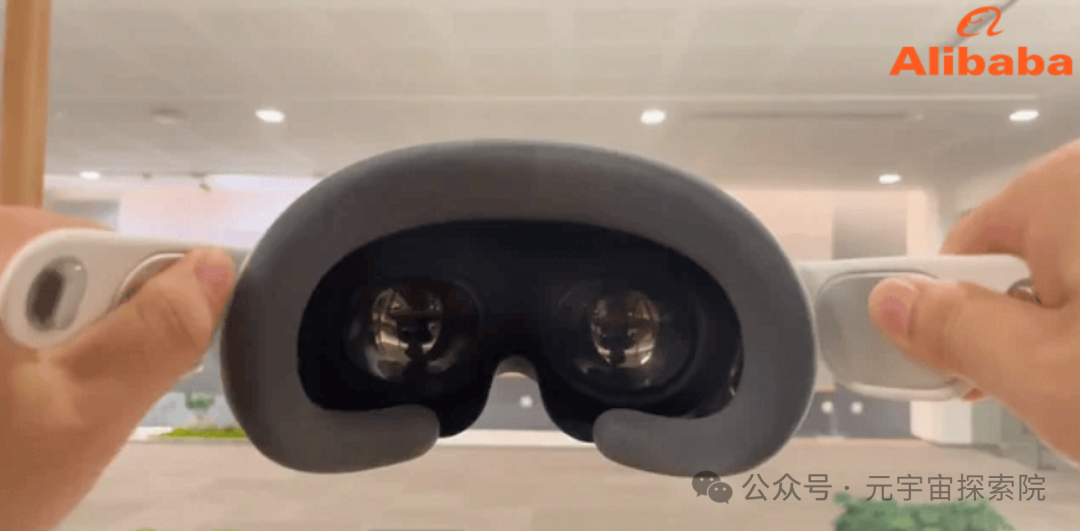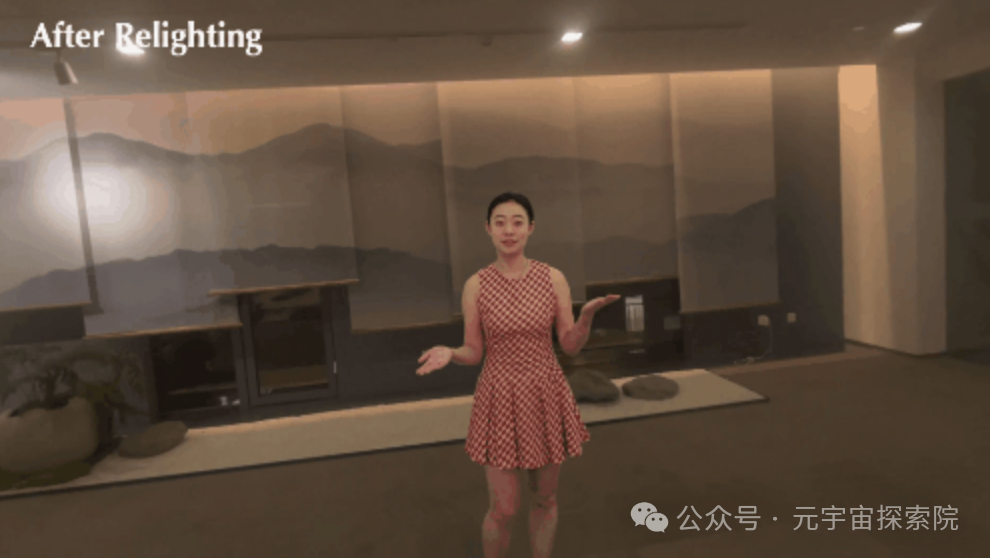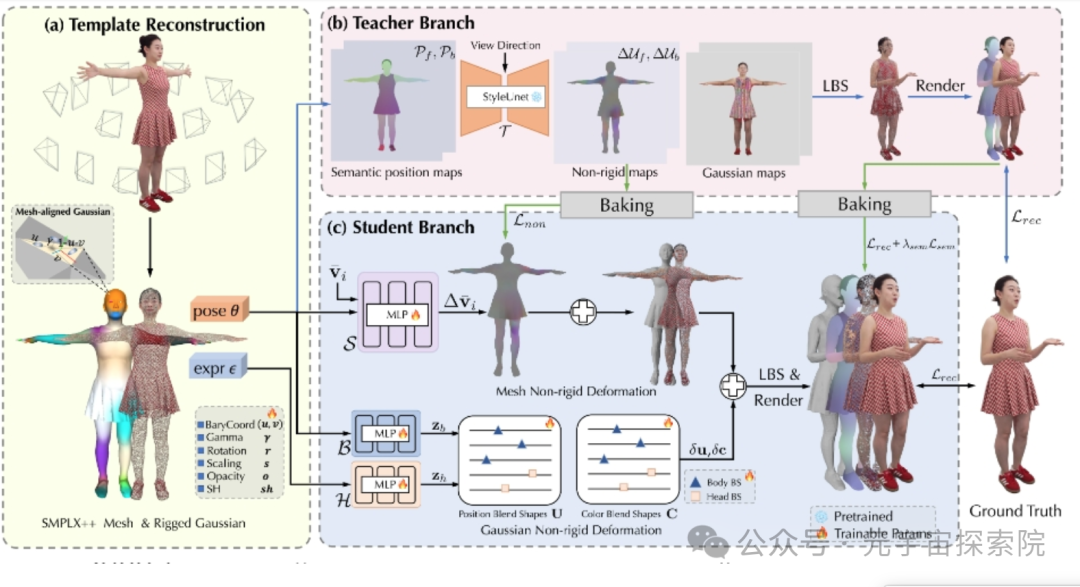Alibaba's TaoAvatar: Giving You a 'Living' Digital Twin in the AR World?

Alibaba's TaoAvatar: Giving You a 'Living' Digital Twin in the AR World?
Opening Chat: Is There a Real Person Behind Your "Online Name"?
Is your online "avatar" real enough? From game character customization to social media cartoon pets, our "digital twins" have changed one after another. But honestly, they're more like static "digital ID photos", at best a pretty mask, still far from being "alive"!
But what if... your digital twin not only looks exactly like you but can also chat with you in real-time, make expressions, and even jump around in the AR (Augmented Reality) world, just like a real person? Hey, that's too beautiful to imagine, right?
Don't think this is just sci-fi! Alibaba's fresh-off-the-press TaoAvatar technology is rolling up its sleeves to make this real. It's not just another stiff 3D doll, but a "fully real" virtual human that can interact in real-time, with rich expressions and natural movements. This isn't just showing off muscles - it might completely revolutionize how we interact with the digital world! Let's dive in and see what makes TaoAvatar so "alive" and why it's so amazing!
Unveiling TaoAvatar: Where's the "Life" in This "Digital Human"?
First, let's highlight: TaoAvatar is completely different from those "paper dolls" or wooden 3D models you've seen before! Its killer features are "real-time interaction" + "super realistic."
Imagine: you put on AR glasses or take out your phone, and a 3D image that looks almost identical to your colleague or friend suddenly appears before your eyes. They can not only chat with you fluently but also perform a full set of micro-expressions like "crooked smile," "frowning," and "enthusiastic nodding" in real-time based on your tone and content, with perfectly coordinated movements. Yes, this is TaoAvatar's basic operation.

So, where's the "life"?
-
Looks Real, Really Real! (Photorealistic): Using powerful 3D modeling and rendering technology (like the hot "3D Gaussian Splatting" black tech), TaoAvatar creates virtual humans that look almost like real photos.
-
Speaks Instantly, Real-time Chat (Real-time Conversation & Interaction): Can understand human speech and respond immediately with voice, super fast reaction.
-
"Drama Queen" Mode, Synchronized Emotions & Actions: This is the key! Backed by powerful AI (like the Audio2BS model), it can instantly generate matching mouth shapes, expressions, and body movements based on speech content. Voice, image, and meaning are highly unified, completely eliminating the awkward "mouth moves but face doesn't" and slow response issues of the past.
-
Not Picky, Runs Anywhere (Efficient & Cross-Platform): Even more surprising is that such high-quality virtual humans don't require much computing power! Alibaba used various optimization techniques (like knowledge distillation, mesh texture slimming) to reduce resource consumption. The result is that it runs smoothly (at 90fps) on our everyday phones and AR devices (even mentioned Apple Vision Pro), greatly lowering the threshold - you can play whenever you want!

Simply put, TaoAvatar's goal is to create a "digital clone" for you in the digital world that can chat naturally and express emotions like a real person.
Why is TaoAvatar Here to "Disrupt"?
If previous virtual avatars were just "photos" or puppets in the digital world, then TaoAvatar is like a "powerful actor" injected with soul. This evolution from "decoration" to "can act and speak" gives it the potential to shake up several fields:
-
New Meeting Style: No More "Grid View"! Imagine future remote meetings where screens are no longer filled with stiff little squares. Your colleagues appear as realistic 3D images "sitting" in your office, and you can clearly see if they're really smiling or just pretending, nodding or shaking their heads. That feeling of "really being together" and subtle emotional communication is especially valuable for international teams or collaborations that need repeated eye contact.
-
Every Industry Needs to "Come Alive":
-
Company Training? New employees can directly practice with virtual mentors one-on-one, learning complex processes or equipment operation safely and efficiently, no need to worry about breaking real machines.
-
Customer Service? Say goodbye to cold robot voices or text, replaced by virtual customer service representatives with expressions and movements, like real consultants, making service warmer and potentially more efficient.
-
Live Commerce? Virtual hosts can operate 24/7, using vivid images and interactive methods to showcase products, answer questions, and even adjust sales strategies based on user feedback. Virtual CEOs giving press conferences isn't a dream anymore, full immersion!
-
Expert "Clone Technique": Experienced doctors can "drop in" to remote areas through virtual clones to guide young doctors in surgery; engineers can also remotely "appear" in factories to teach you how to fix complex machinery.
TaoAvatar's power isn't just in being "realistic," but in being "usable." Its ability to run on our everyday devices means this technology is no longer just a rare lab experiment, but has real potential for widespread commercialization.
Beyond Looks: The "Soul" Lies in Eye Contact and Body Language
In human communication, more than half of the information isn't conveyed through words, but through "subtext" like eye contact, expressions, gestures, and posture. These small details determine the depth and emotional color of communication. Previous virtual human technology was basically a "wooden beauty" in this aspect, with dry interactions and no human touch.
One of TaoAvatar's essences is "bringing back to life" these non-verbal cues. Using smart AI models, it can detect whether your emotional tone is happy or sad, where the emphasis is, and then convert it into natural expressions and movements. When the virtual human talks to you, you'll see their eye contact, eyebrow movements, smile, and even hand gestures and body lean matching their tone. This attention to detail in realism makes you feel like you're not chatting with a bunch of code, but really interacting with a digital life with "soul," boosting immersion and emotional connection!
Big Picture: TaoAvatar at the Forefront
TaoAvatar's birth isn't accidental. AR technology is becoming more mature, AI capabilities are growing stronger every day, and globally (especially in China), there's fierce competition in the digital human field. TaoAvatar is both an important muscle flex from Alibaba and reflects the entire industry's pursuit of more natural, immersive, and efficient human-computer interaction methods.
This technology has the potential to push down another big section of the wall between the physical and digital worlds. When realistic virtual humans can walk into our AR environment, the way digital information and services are delivered will become unprecedentedly intuitive and human.
Bold Future Imagination:
-
Meetings might truly become "worlds apart yet close as neighbors," no more need to endure long journeys.
-
Online education might have tireless, always patient virtual teachers.
-
Virtual companions or digital assistants might understand you better, providing deeper emotional comfort (good news for singles?).
-
Gaming and socializing, the experience would definitely be on another level...
Of course, new things always bring new problems, like ethics, privacy, social impact, etc., which we need to keep our eyes open to monitor and discuss.
Conclusion: Ready to Welcome the New Era of "Human-Machine Coexistence"?
Alibaba's TaoAvatar, with its almost indistinguishable face, real-time interaction capabilities, and that "living" quality, has painted us a picture - an exciting future vision. It's not just a small breakthrough in technology, but a bold exploration of future human-machine relationships. It's telling us: hey, get ready to welcome a new era where digital twins and real people deeply integrate, and the boundaries between virtual and reality become increasingly blurred!
When your "digital clone" can not only attend meetings for you, help you work, but even express your emotions... how should we define "reality"? And how should we interact with these increasingly "living" digital lives? TaoAvatar has opened a door, and what the world behind it looks like depends on how we explore and shape it.
分享文章
3篇相关文章
Meta Teams Up with Oakley: Are Smart Sports Glasses Coming?
2025-06-17
Hey tech enthusiasts and sports lovers, has the tech world been a bit restless lately? That's right, Meta is about to make some big news! They're not just playing with the metaverse anymore - they're directly targeting our eyes - Meta has officially announced a partnership with the sports veteran Oakley to launch smart sports glasses!
Meta Unveils Aria Gen 2 AR Glasses Key Technologies: Deep Dive into the 'Right Posture' for Future Human-Computer Interaction!
2025-06-12
Tech enthusiasts, Meta has once again flexed its muscles by releasing the Aria Gen 2 AR glasses. These aren't for binge-watching or gaming - they're Meta's secret weapon specifically crafted for AI research.
900 Million Users Rejoice! Snap AR Glasses Coming in 2026, Are You Ready for This AR Wave?
2025-06-11
Hey tech enthusiasts and fashionistas, the tech giants are at it again! Snap, the company behind Snapchat, recently announced they will launch consumer AR glasses - Specs - in 2026! With Snapchat's 900 million users, we're all about to experience the coolness of AR!